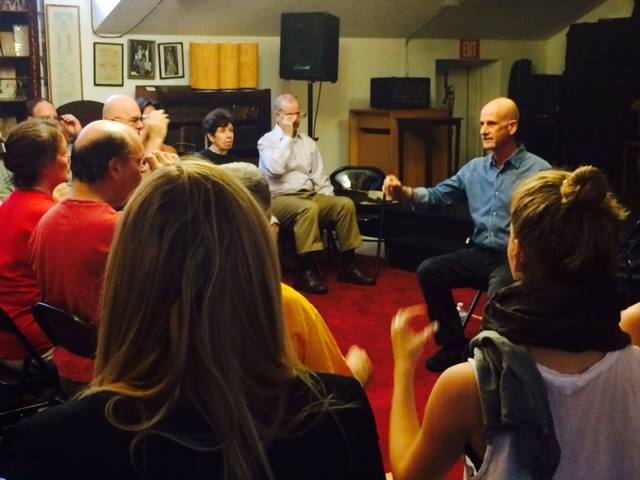 The Alexander Technique and Meditation
The Alexander Technique and Meditation
The Alexander Technique and meditation can be beautifully interwoven. The Alexander Technique and meditation are made for each other. Since the Alexander Technique is known as a ‘pre-technique’, using it before meditating can enhance your meditation practice. The Alexander Technique helps shorten the time it takes to get to the state, tone, or zone you may want when you meditate, and help you stay in that place longer when you’re through meditating. Most of us don’t necessarily practice meditation to become better meditators; we meditate for the the effects it has on our lives.
Alexander Technique, Meditation, Breathing,
The Alexander Technique and meditation share the belief of the importance of full, natural breathing. Alexander’s idea is that breathing should be full and natural. The entire torso moves as you breathe; no holding, and no extra doing. The throat is open and the jaw is free of tension.
Allow yourself to release tension in your neck, shoulders, lower back, legs, toes and fingers. Release tension in the facial muscles, or anywhere else you notice holding, tensing, or gripping.
Meditation Posture
Meditation teachers speak of the importance of meditation posture as you meditate. The word ‘posture’ has a connotation of military posture; stomach in, chest out, shoulders back, chin tucked in etc. The Alexander Technique teaches good posture differently. It uses no force, with more undoing than doing more subtraction than addition.
Allow you neck to be free, so that your head can move up and away from your spine. Notice your breathing again. Let your sit bones release down into the chair or cushion while, in opposition, your torso and head move up effortlessly.
You neither want to be collapsed as you meditate, nor do you want to be rigidly straight, which adds unnecessary tension.
Alexander Technique and Meditation Together
As you apply the principles of the Alexander Technique, you help rid your body/mind of excess tension. You can be in a more meditative place even before you formally begin the meditation, and stay there longer afterwords. The Alexander Technique can help make the line between meditating and not meditating blurry. Your meditation practice is augmented because you’re living your life in a more calm, quiet, conscious, aware, easeful way both in mind and body.
Jon Kabat-Zinn uses a word that arises in Alexander Technique lessons-‘dignity’. ‘He further says ‘…that you are who and what you are-beyond all words, concepts, and descriptions…’ This beautifully describes the Alexander Technique’s view of posture, and the relationship between the Alexander Technique and meditation.
Here’s Jon Kabat-Zinn’s more complete quote speaking of sitting meditation from his great book ‘Coming To Our Senses”:
…It means taking your seat in and in relationship with the present moment. It means taking a stand in your life, sitting. That is why adopting and maintaining a posture that embodies dignity-whatever that means to you-is the essence of sitting meditation. The embodiment of dignity inwardly and outwardly immediately reflects and radiates the sovereignty of your life, that you are who and what you are-beyond all words, concepts, and descriptions, and beyond what anybody else thinks about you, or even what you think about you. It is a dignity without self-assertion-not driving forward toward anything, nor recoiling from anything -a balancing in sheer presence, a presencing.
Mark Josefsberg Alexander Technique NYC










Excellent points about the blending of techniques Mark, when my friend Sydney Laurel first showed me the Alexander Technique I was surprised how I could feel the difference immediately. My meditation posture goes hand in hand with my state of mind.
If I may, I’d like to point your readers to some excellent instructions on How to Meditate and a basic overview of this ancient tradition as practiced in Tibet.
Yes, I also think meditation and the Alexander Technique can go hand in hand. In fact, that’s a really nice image!
Thanks so much, Bruce, and thanks for the link!
Social comments and analytics for this post…
This post was mentioned on Twitter by 1000DayNewsFeed: Meditation: Alexander Technique And Meditation | The Alexander Technique … https://bit.ly/86adc7…
Hello Mark! Lovely article. I like that you use the word “easeful” regarding posture and meditation. I think Integral Yoga and AT have similar approaches to cultivating the meditative state. Thanks for visiting my blog and for connecting! OM Shanti. Holly
Thanks Holly. I agree, and I think Integral yoga, the Alexander Technique and meditation have much in common, and can only enhance one another.
I like your comments about AT and mediation. In our training we had to opportunity to work with students of Zazen meditation. They had to sit for long hours in the retreats. Strengthening their backs was a plus!
Thanks Rochelle. ‘Strengthening their backs was a plus!’ Being in shape and being strong is always a good thing. As you know, however, What we don’t want to ‘muscle’ things, or even do too much especially when we’re meditating.
Extra tension can affect the breathing, and breathing has an effect on meditating. This is another reason why the Alexander Technique and meditation are so interwoven.
Nice post Mark! Here’s an interview that’s relevant to the topic with Jon Bernie – as we discussed if meditation is best done with as little effort as possible, non-doing as it were, then if you’re struggling to sit easily when you meditate there’s a bit of a problem! Here’s the interview: https://bodylearning.buzzsprout.com/382/42230-how-the-alexander-technique-can-enhance-your-spiritual-practice
Thanks Robert,
I always enjoy your interviews. Everyone should check out the interview you did with Jon Bernie, and the others on your site!